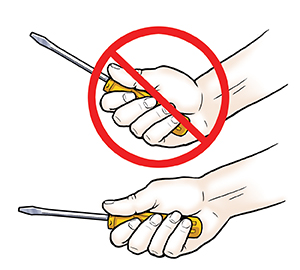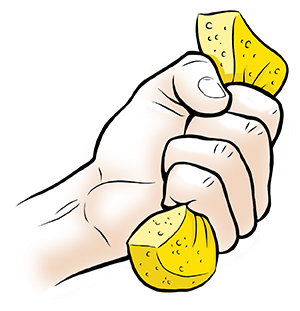Carpal Tunnel Syndrome Prevention Tips
Carpal tunnel syndrome is a painful condition in the hand and wrist. It occurs when there is too much pressure on the median nerve at the wrist. The median nerve runs from your forearm to the palm of your hand. It may get squeezed or pressed when it passes through the carpal tunnel from your wrist to your hand. You may then feel numbness, tingling, pain, or weakness in your hand and up your forearm.
Doing the same hand activities over and over can put you at higher risk for carpal tunnel syndrome. But you can reduce your risk. Learn how to change the way you use your hands. Below are tips for at home and on the job. Also follow the hand and wrist safety policies at your workplace.
Keep your wrist in neutral

Keep a straight (neutral) wrist position as often as you can. Don’t use your wrist in a bent (flexed) position for long periods of time. This includes extended or twisted positions. Keep your wrists straight when using a computer for a prolonged time. Try to take frequent breaks.
When you sleep, don't have your wrist flexed. This means don't sleep all curled up on your side. And don't put extra pressure on your wrist for long periods of time. For example, don't sleep on your stomach with your hands under you.
Watch your grip
Don’t use only your thumb and index finger to grasp or lift something. This can put stress on your wrist. When you can, use your whole hand and all its fingers to grasp an object.
Minimize repetition
Don’t move your arms or hands the same way for long periods of time. And don't hold an object in the same way for long periods of time. Even simple, light tasks can cause injury this way. Instead, switch tasks or switch hands.
Rest your hands
Give your hands a break from time to time with a rest. Even a few minutes once an hour can help.
Reduce speed and force
Slow down when you do a forceful, repetitive motion. This gives your wrist time to recover from the effort. Use power tools to help reduce the force.
Strengthen the muscles
Weak muscles may lead to a poor wrist or arm position. Exercises will make your hand and arm muscles stronger. This can help you keep a better position.
 |
| Keep your wrist in a straight (neutral) position when exercising. |